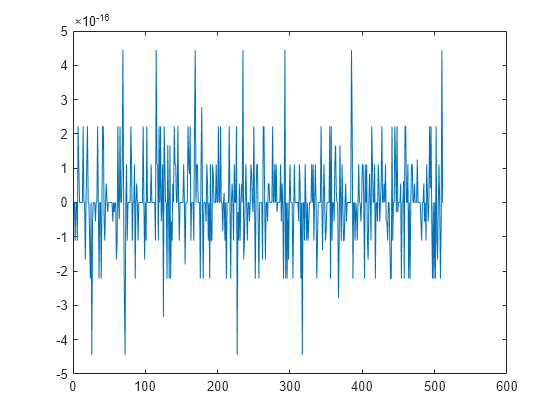allpass2wdf
Allpass to Wave Digital Filter coefficient transformation
Description
W = allpass2wdf(A)A.
Each cell of A holds the coefficients of a section
of a cascade allpass filter. W is also a cell
array, and each cell of W contains the transformed
version of the coefficients in the corresponding cell of A.
W can be used with allpass filter objects such as dsp.AllpassFilter and dsp.CoupledAllpassFilter,
with structure set to 'Wave Digital Filter'.
Examples
Input Arguments
Output Arguments
Algorithms
In the more general case, the input coefficients A define
a cascade or multisection allpass filter. allpass2wdf applies
separately to each section of the same transformation used in the
single-section case. In the single-section case, the numeric coefficients
vector a contains a standard polynomial representation
of an allpass filter of order 1, 2, or 4. For example, in the first
order case,
represents the first order transfer function:
and in the second order case,
represents the second order transfer function:
.
The allpass transfer functions H1 and H2 can also have the following alternative representations, using decoupled coefficients in vector w1 or w2 respectively.
For allpass coefficients, w is often used
to derive adaptor multipliers for Wave Digital Filter structures,
and it is required by a number of allpass based filters in DSP System Toolbox™ when Structure is
set to 'Wave Digital Filter' (e.g. dsp.AllpassFilter,
and dsp.CoupledAllpassFilter).
For a given vector of section coefficients a, allpass2wdf computes
the corresponding vector w such that
This results in using the following formulas:
References
[1] M. Lutovac, D. Tosic, B. Evans, Filter Design for Signal Processing using MATLAB and Mathematica. Prentice Hall, 2001.
Version History
Introduced in R2014a
